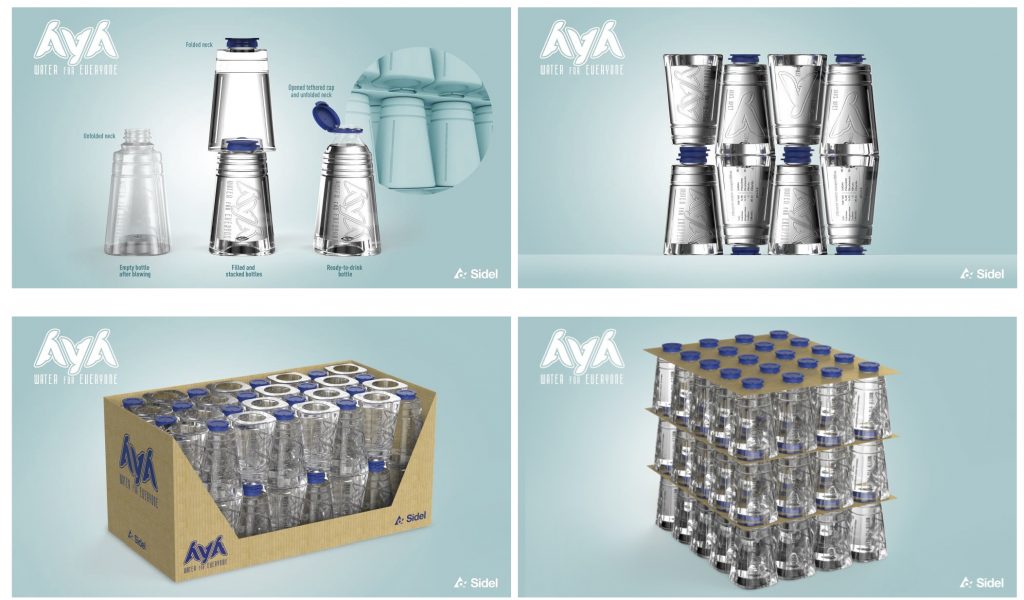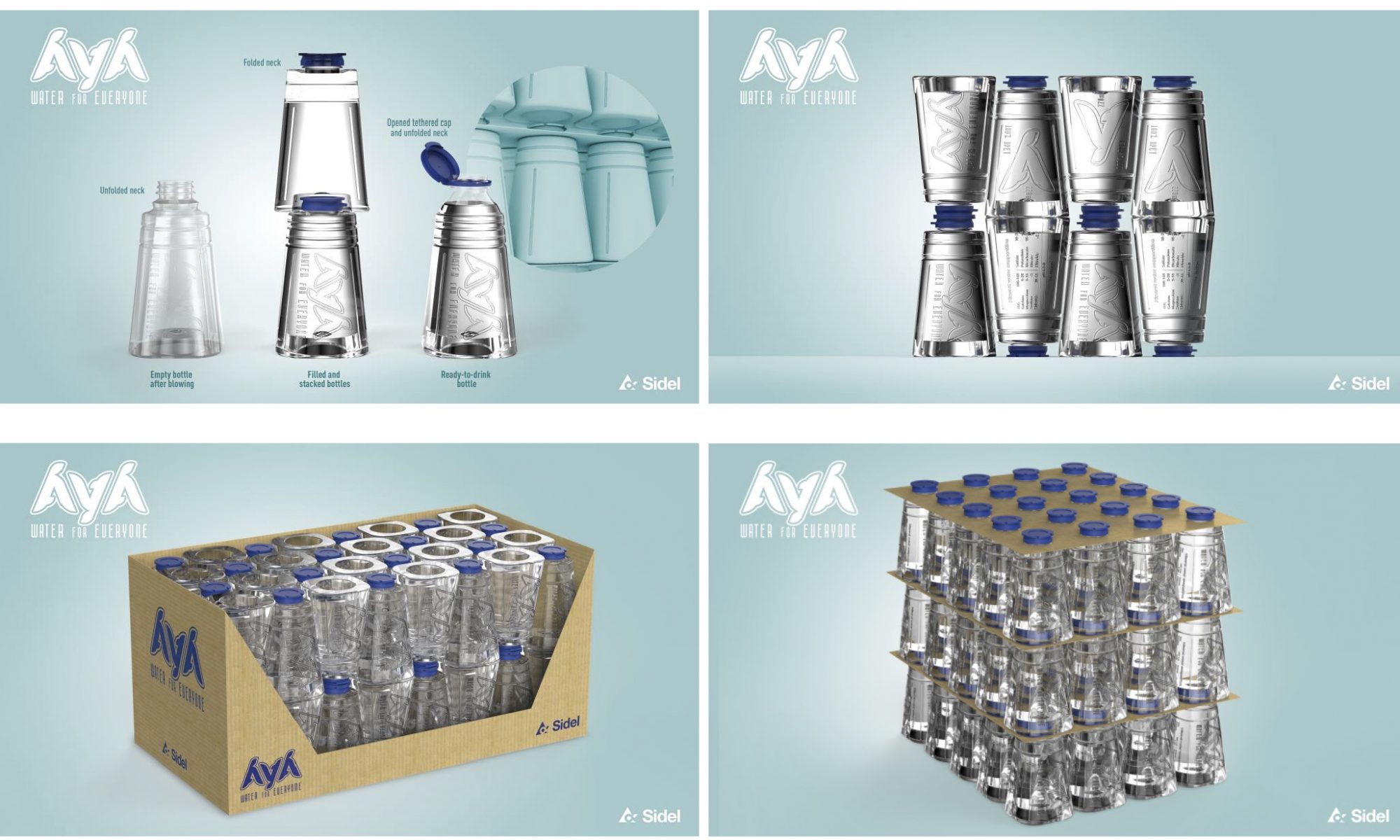
The World Food Innovation Awards have justly recognised this newly released, environmentally friendly, compact and attractive water bottle design named after an ancient deity
For its latest eco-friendly packaging design concept, Aya, Sidel has received the World Food Innovation Award (WFIA) in the category “Best Drink Packaging Design”.
With the prize-winning Aya design, Sidel has developed a comprehensive innovative “End to End” packaging alternative for still water, covering all angles from 100% recycled PET (rPET) primary to carton secondary and on to tertiary packaging alternatives – all optimised for local distribution methods.
The result is a cost-effective and sustainable packaging concept tailored to match circular economy requirements and boost industrial production efficiency.
For six years now, the World Food Innovation Awards has celebrated concept excellence and innovation across every category of the global food industry. Judged by a panel of 14 industry experts, the awards honour the most ambitious new products and developments. The awards ceremony, held in association with FoodBev Media, took place at London’s ExCeL centre on March 5.
“This award means a great recognition from the judging panel on how Aya meets sustainability requirements,” said Sidel’s Packaging Design Engineer, Laurent Lepoitevin.
Distinguished dedication to optimal packaging concepts
Improving recyclability by reducing packaging waste is one of the foremost challenges in the F&B industry.
Sidel works in close partnership with its customers and packaging manufacturers with the aim to develop ever-more sustainable primary and secondary packaging. Thus, Aya was born, reinforcing the company’s sustainability commitment.
The name refers to an ancient Mesopotamian deity, also known as Ea or Enki, who was considered the master of groundwater. This makes perfect sense considering the intention of the concept: to provide safe drinking water to those without natural access to it.
Recognition for an innovative 100%-rPET V-shaped bottle
Aya is a 220ml water bottle in a V-shape. With an extremely light weight of 5g, it is designed to radically reduce raw materials at source. The bottle is blown from 100% rPET pre- forms for a truly circular economy, offering new life to every bottle. Aya also comes with a snap-on tethered cap, aiming to additionally reduce plastic pollution.
Furthermore, brand names, logos and legally required information may be engraved on the bottle, eliminating the need for a label and thus further reducing waste.
Aya has a patented packaging solution named Swing shoulder. After the blow- moulding process, the bottle shoulder remains in an intermediary deployed position. After filling and capping, mechanical pressure is applied to move the shoulder down and create the V-shape. This reduces the bottle bulk and prevents any droppage when opening.
Aya also features a specific deep base design to allow to stack the bottles, reducing the height to improve the whole storage volume.
Secondary packaging reduced to a minimum
Engineered within the Sidel “End to End” approach to better leverage packaging through the supply chain, Aya’s V-shape offers two innovative packaging alternatives in terms of compactness and reduction of secondary and tertiary packaging material.
Firstly, it offers the possibility to stack the bottles in layers. The Boss base shape perfectly accommodates another bottle’s cap, ensuring stability during pallet storage and transport. Each layer is held together with a perforated cardboard separator that fits over the necks. Furthermore, the size of the separator can be adapted to form individual custom packs which can meet any space and storage constraints.
Alternatively, the bottles can be placed top-to-tail to optimise any storage volume, making for compact cases that can be easily transported.
“With sustainability constantly on our minds, we look at packaging and equipment from a 360-degree perspective,” Mr Lepoitevin concludes. “Not only do we always take primary, secondary and tertiary packaging as well as their inter- action with the equipment in the facto-ry into account when designing new concepts, we also consider all the impacts they create upstream and down- stream in the entire value chain – always aiming to deliver the most sustainable packaging solutions.”



